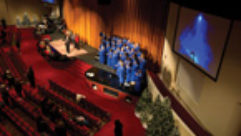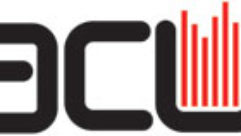Associations Focus: Training Day
Aug 1, 2004 12:00 PM
CEDIA listened to your requests and is offering full-day Sunday workshops at CEDIA EXPO 2004, September 8-12 in Indianapolis. CEDIA and education volunteers have collaborated to create nine workshops in all five education tracks. The length of each course, from 8 to 13 hours, allows the instructor to cover more material, provide hands-on experience, and answer questions. The workshops also have Continuing Education Unit values (CEUs), which participants can use toward maintaining CEDIA certification.
The EXPO show information and registration brochure offers an explanation for each course, including key topics, cost, and who should attend. Some of this year’s options include:
How to Successfully Pull Off That $100K Integrated System
Installing your whole-house electronic systems right the first time is essential for survival in this industry. This can be accomplished only with the proper electronic schematics and wire lists in hand before leaving for the job site.
Whether you are from a small or large company or are a novice, an advanced designer, or an integrator, this workshop will help improve your electronic design and drawing skills and help you better understand the design process from start to finish. This one-day, hands-on workshop taught by industry veteran Dave Tkachuk will teach you all of the ins and outs of Visio necessary to create the documents you need.
Intensive Home Theater Workshop
This 13-hour course is the most comprehensive home-theater design course in the industry. Participants start with the basics and go all the way through high-end design and build techniques.
Russ Herschelmann, the man who developed CEDIA’s recommended home-theater guidelines, uses examples from real-world projects he designed and built. He was the project designer for Disney’s $4 million Ultimate Home Theater Experience and teaches to standing-room-only crowds at every CEDIA EXPO.
Register for CEDIA EXPO classes and the trade show at www.cedia.org/expo.
GET CERTIFIED
Put yourself above the competition, open new doors, and establish credibility with employers by becoming CEDIA Installer Level II certified. If you are already CEDIA Installer Level I Certified, you demonstrated that you have what it takes to be the best. Now CEDIA is offering your next challenge; Installer Level II Certification is what every pro must have to remain competitive in the custom installation and electronics industry.
The Level II Installer supervises and works on projects, interacts with others, installs, troubleshoots, calibrates, and ensures that the installation meets specifications. This individual must be a CEDIA-Certified Professional Level I Installer with additional knowledge. Three or more years in the custom installation industry as an installer and responsibility managing others are recommended prior to taking the exam.
You can also maintain your CEDIA Installer Level I certification by achieving the Level II certification. In other words, the certification clock starts over when you achieve a new level of certification. From that point, you are required to maintain 30 CEUs according to your most recent certification, and all of your CEDIA certifications are valid. Don’t let your competitive edge slip away!
Register to take the CEDIA Installer Level II review course and exam at the upcoming CEDIA Expo, September 8-12 in Indianapolis. Check the certification schedule at www.cedia.org/certification for additional locations so that you can become CEDIA certified.
For more information about the CEDIA Installer Level II exam, visit www.cedia.org/education/cert_l2_exam_info.php. This link includes information, such as a list of recommended reading material and the classification system, which will both be helpful when you are preparing for the Installer Level II review course and exam.
To register for the exam at CEDIA Expo, please visit www.cedia.org/certification.
For more information on CEDIA, visit www.cedia.org or call (800) 669-5329.
ICIA: Keep It Growing
The worst thing about the present, someone once joked, is the future. Whoever said so might well have been in the AV business. With technologies and markets in constant motion, the future often seems as risky as a casino. How can professional AV dealers plan for next year’s challenges without going overboard or in the wrong direction? Or fall behind by sitting tight too long? When change is rapid, even stability may not be a defense.
Important indicators for the future, as well as the first documented profile of the size of present markets, are emerging from a long-awaited report by the International Communications Industries Association (ICIA). The recently released market survey describes for the first time the dimensions of the audiovisual industry and suggests how AV dealers and contractors can sensibly plan ahead.
ICIA’s chief news is that the AV market is bigger than most people have believed, generating $18.9 billion a year in product sales and service revenues in North America. The AV industry is also dramatically growing and is projected to continue growing at a rate of 9.6 percent annually during the next five years.
The AV Market Definition and Strategy Study (MDSS) was prepared for ICIA’s International Communications Industries Foundation by Acclaro Growth Partners. It shows how AV technology has developed to the point that it enhances virtually all of today’s communication-related activities, whether in a boardroom, a classroom, an office, or a public space.
Two key factors are driving the growth: the many new applications for AV products and AV technology’s increasing convergence with information technology (IT), which is accelerating the spread of technologies that support such newer applications as streaming media, Webcasting, wireless technology, and AV-related software programs.
The survey describes an AV market with annual product sales of $11.5 billion and revenue from services of $7.4 billion. It shows the top product groups to be display systems, which are responsible for 40 percent of sales; AV systems for 22 percent; peripherals, including furniture and lighting, for 14 percent of sales; control systems for 10 percent; and signal management processing products for 8 percent.
Driving new demand in the market are displays, control systems, and projectors, with display systems expected to experience a growth rate of 12.1 percent owing to innovations in flat-screen technologies.
However, margins are being squeezed, and professional AV dealers, the report concludes, are facing a “moderately high” competitive threat. Although today’s dealers offer services covering a broader spectrum of activities — ranging from distribution, resale, and design to installation and integration — one result is that the more complicated market structure is challenging traditional dealers.
ICIA’s report recommends that smaller, independent dealers, which make up the majority of the market, develop unique and defensible niches in the areas where they’re based. Whether the niche is product, service, or end-user oriented should depend on the nature of local competition.
Dealers can develop a strategy for themselves by looking for opportunities to expand and focus their businesses. For example, they can investigate expanding into new markets, such as health care and the performing arts, that are solid and growing or into products like display systems that are experiencing the greatest demand. Display systems generate 40 percent of product revenue in North America. This category includes displays at $1.1 billion; projectors at $2.4 billion; screens and shades at $650 million; and white boards at $390 million. The report splits out suggestions for dealers into market-oriented strategies, product-oriented strategies, and service-oriented strategies. An example of a service-oriented observation is that programming is likely to be a critical dealer service in the next five years.
In a similar fashion, dealers can look into the opportunities available from focusing more strongly on large, established markets, like retail or hospitality, or specializing in product groups that apply to a variety of AV markets, such as control systems, projectors and displays, and conferencing systems.
The report also recommends that dealers more actively:
- promote their expertise, because the growing complexity of projects is likely to make dealer know-how more valuable and capable of supporting higher prices;
- develop and diversify service offerings over the short term. Programming, for example, is likely to be a critically needed service during the next five years, along with traditional services, like systems integration, equipment sales, and systems design;
- embrace AV/IT services and products;
- forge relationships with design consultants or develop design capabilities internally. Independent design consultants are a reliable source of revenue for dealers, with annual revenues up to $100 million, while very large dealers will want to expand their own design capabilities;
- pursue customers in the education, training, business, corporate, and government end-user markets. Education and training are especially attractive areas because over 90 percent of the study’s participants say they manage more than 15 AV spaces, significantly above the number of AV spaces managed by those in business, corporate, and government markets;
- court IT departments when necessary. IT departments tend to be significantly involved departments in purchases of AV products and services, even though end-users downplay their role; and
- investigate opportunities in home theater, especially small dealers, who may have more flexibility to incorporate it profitably into their product and service offerings.
ICIA’s report is available in two versions. The Commercial Market Definition and Strategy Study — for dealers, integrators, rental/staging companies, and independent consultants — is available for $349 to ICIA members and $499 to nonmembers. The Manufacturer MDSS is available for $999 to ICIA members and $1,499 to nonmembers. They may be purchased on the ICIA Web site at www.infocomm.org/marketintelligence.
For more information about ICIA and InfoComm, visit www.infocomm.org.
NSCA: Career Path
Achieving NSCA’s certified electronic systems technician (C-EST) status is an investment well worth the effort — but one that isn’t automatic. Using both a written test and a hands-on performance verification, the exams are difficult. But that’s what truly separates those who have mastered multiple systems and those who haven’t.
To assist people applying for C-EST status and the registered electronic systems integrator (R-ESI) designation, the NSCA University offers a comprehensive training package with program entry points reliant upon the individual’s skill level — something quickly measured by an online assessment test. The randomly generated, 100-question test offers an immediate score with an accompanying training prescription. From there individuals will be directed down a possible path in what has become the industry’s most comprehensive training program for systems technicians and integrators (see Fig. 1). Anyone taking the assessment will receive a $50 credit — a full refund of the assessment test cost — when applied toward any EST course.
“In my business, working with qualified technicians is the key to success,” says Jim Faber, consultant with WJHW in Dallas. “C-ESTs are an obvious choice when I am looking for quality professionals.”
The well known and highly regarded NSCA has been educating electronic systems professionals for more than two decades. Project EST, though it is not the only initiative supported by the NSCA University, is one of its largest. “C-ESTs represent the highest quality, technical professionals in the industry,” says Chuck Wilson, NSCA executive director. “As technology advances, industry professionals must in turn enhance and validate their technical skills to meet customer demand. Soon the most important people in our industry will be those who can master multiple systems and provide a single solution to the end-user. The C-EST training package has been designed to assess and train technical staff on system installation and service best practices, meanwhile giving them a better chance at successfully completing the C-EST requirements.”
The C-EST exam and accompanying prep training were funded in part by the NSCA Education Foundation through its ongoing Project EST fund-raising efforts. More information may be found at www.nsca.org/est or by contacting NSCA’s certification and registration department at (800) 446-6722.
For more information about NSCA, visit www.nsca.org or call (800) 446-6722.










